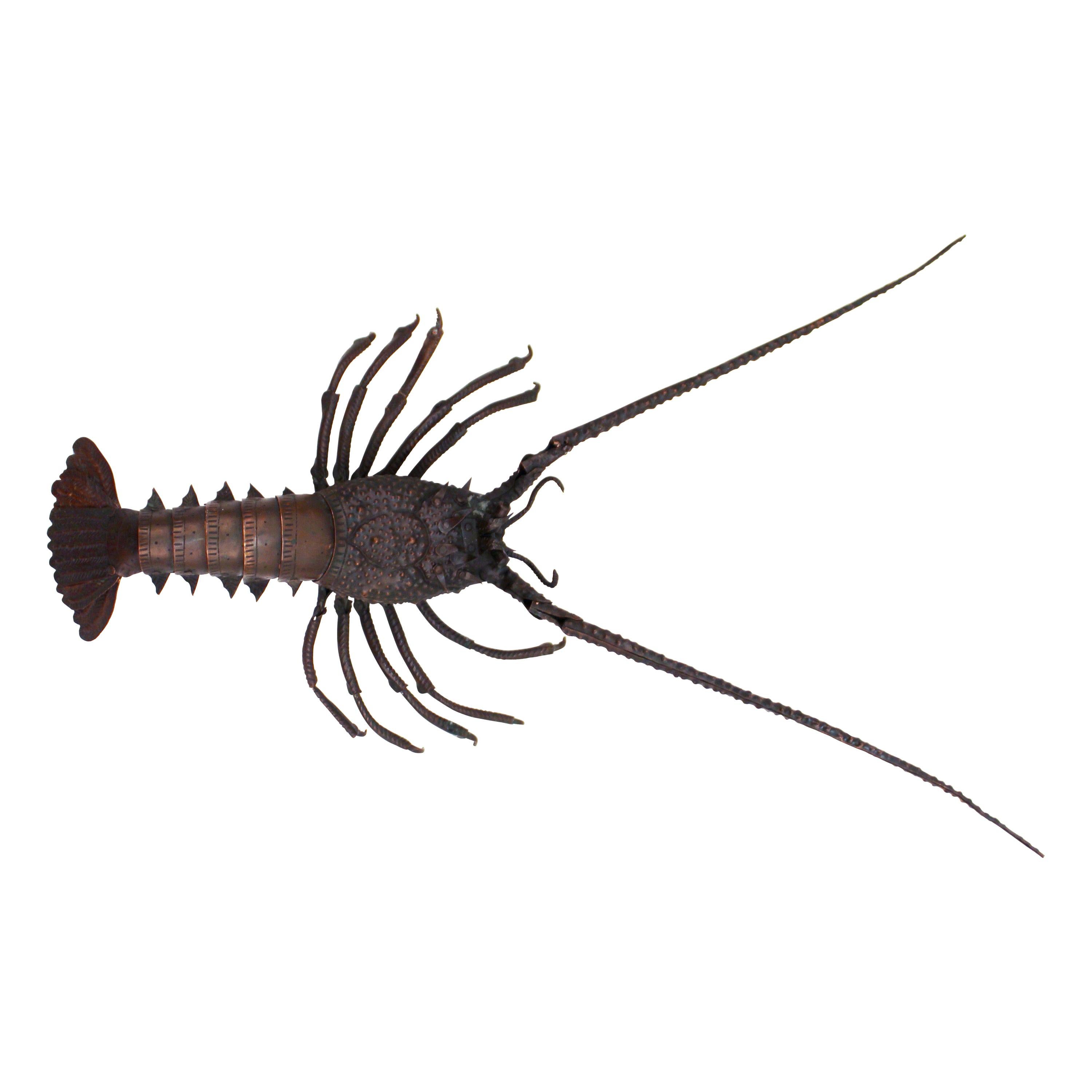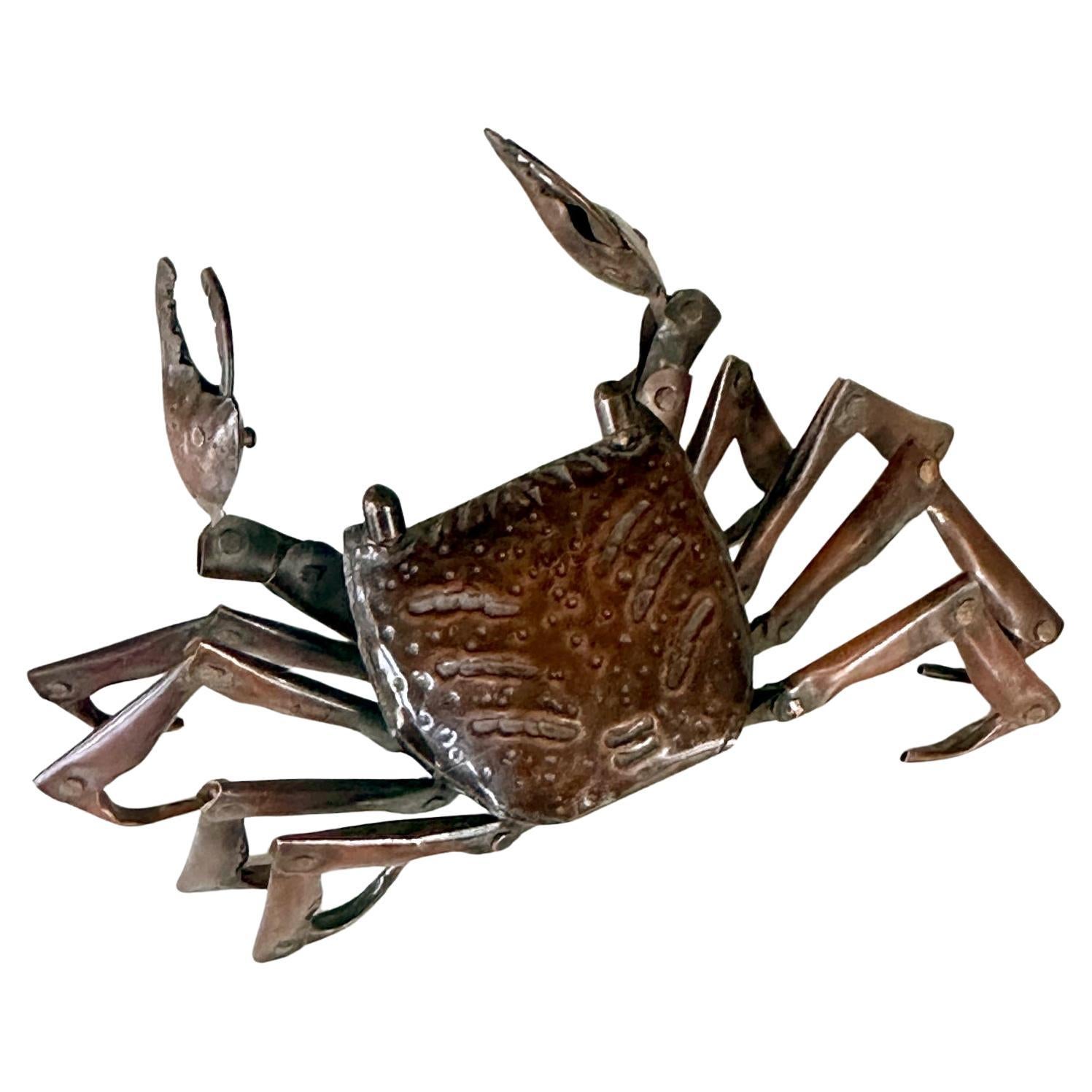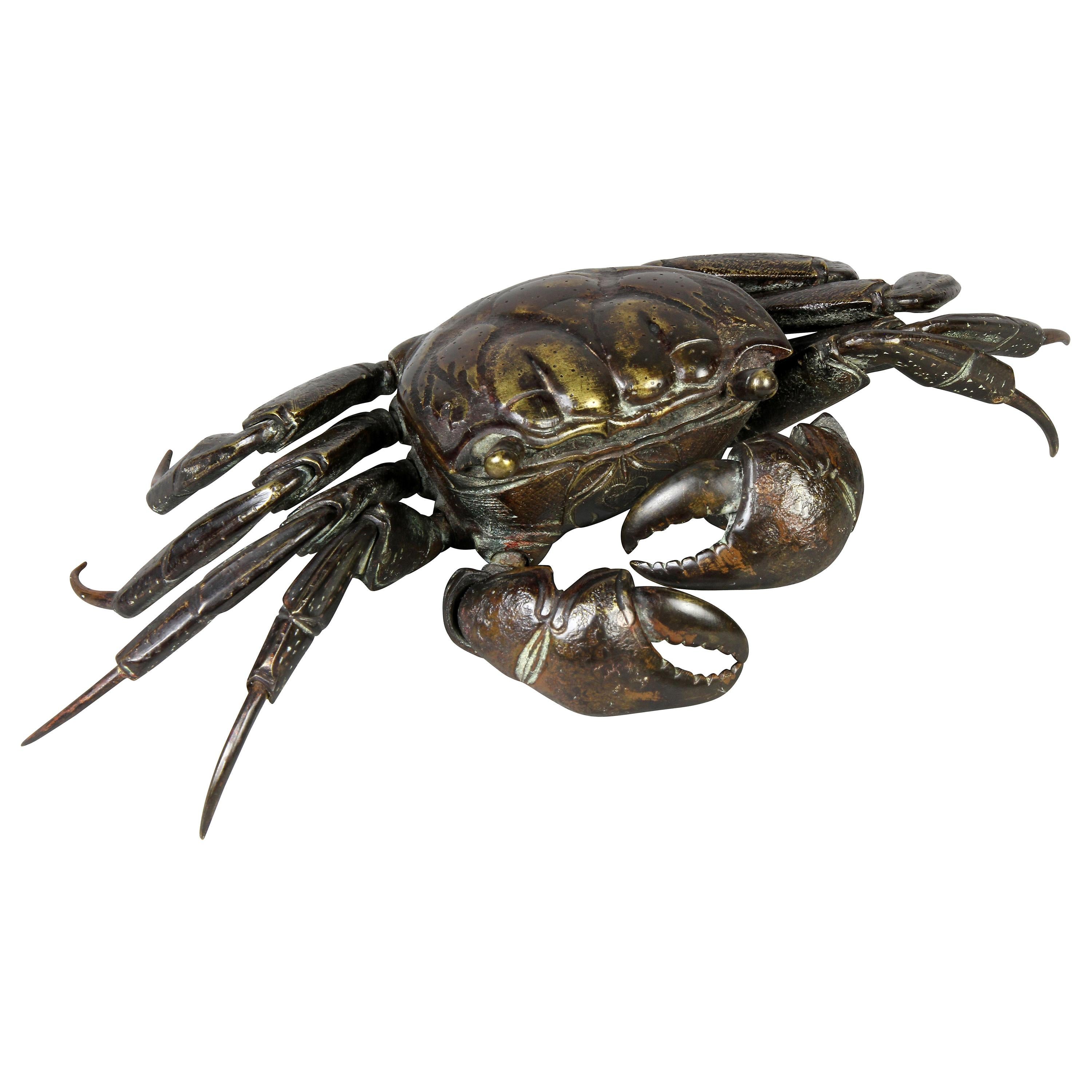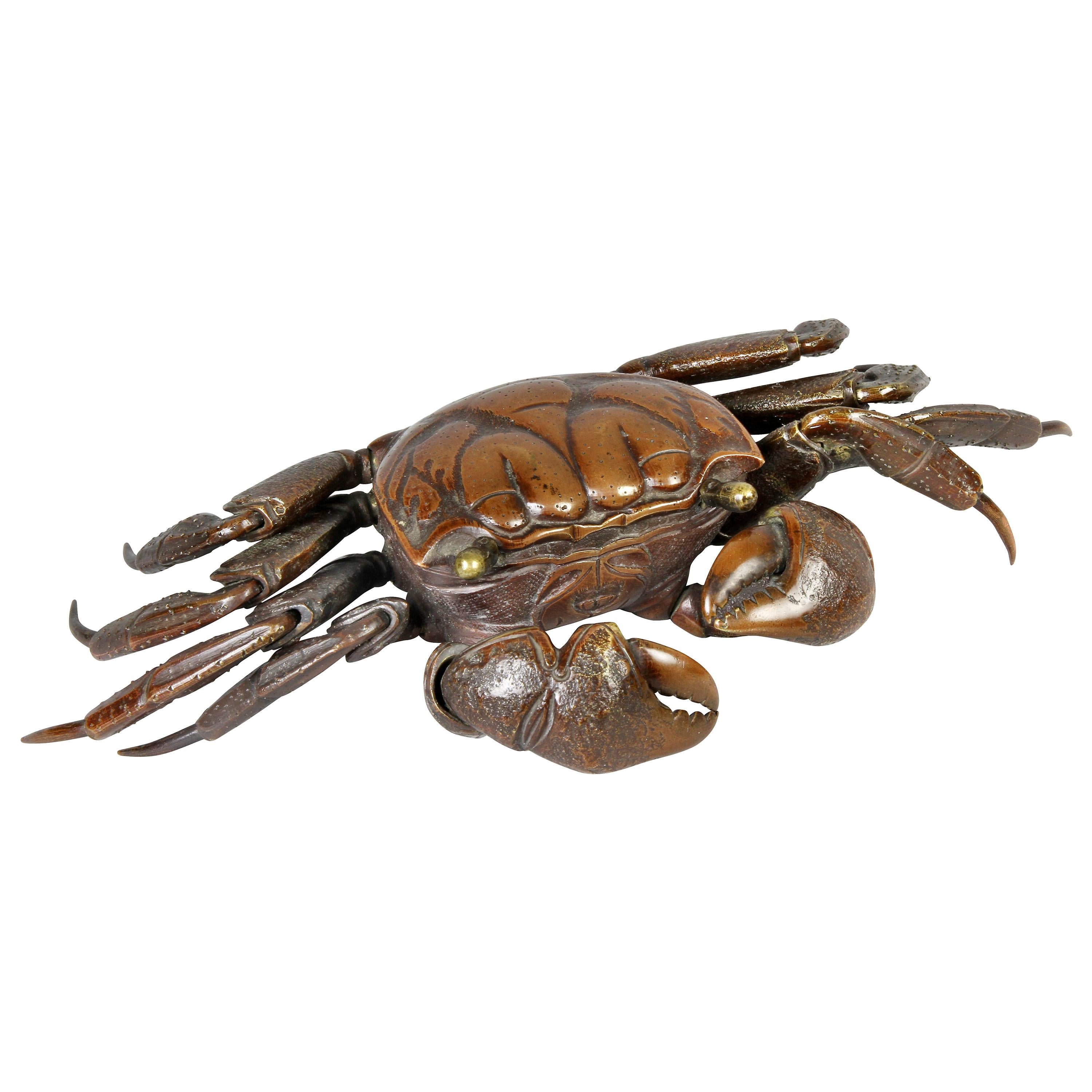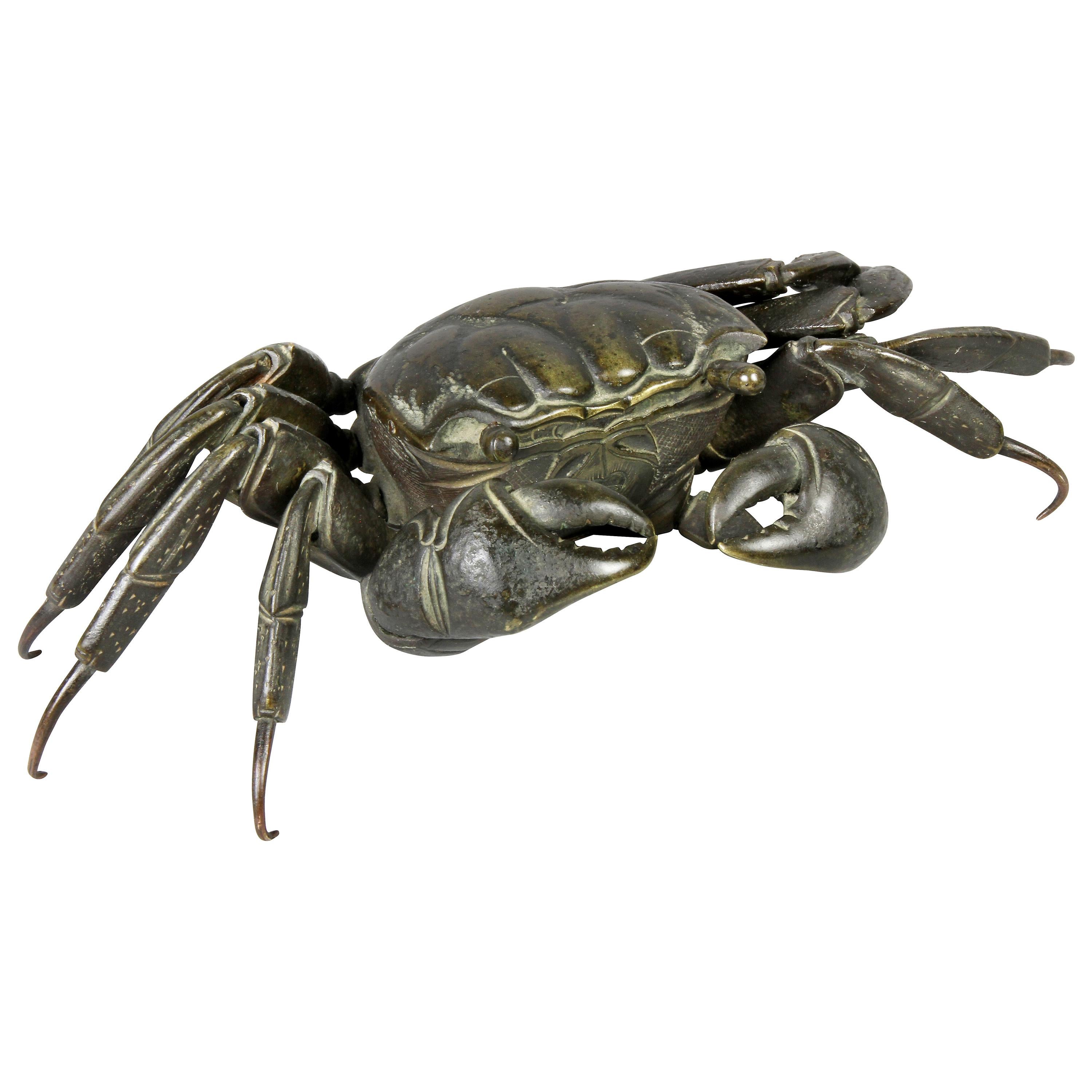Items Similar to Japanese Articulated Iron Jizai Okimono of a Lobster by Myochin Muneharu
Want more images or videos?
Request additional images or videos from the seller
1 of 11
Japanese Articulated Iron Jizai Okimono of a Lobster by Myochin Muneharu
About the Item
This articulated okimono represents a naturalistically rendered lobster, with fully articulated limbs, antennae, body, and tail and comes with an inscribed wood storage box.
Signed: Myochin Muneharu saku.
- Dimensions:Height: 3.55 in (9 cm)Width: 16.34 in (41.5 cm)Depth: 3.55 in (9 cm)
- Materials and Techniques:Iron,Embossed
- Place of Origin:
- Period:
- Date of Manufacture:circa 1850
- Condition:
- Seller Location:Milano, IT
- Reference Number:
About the Seller
5.0
Recognized Seller
These prestigious sellers are industry leaders and represent the highest echelon for item quality and design.
Established in 2005
1stDibs seller since 2018
10 sales on 1stDibs
Typical response time: 2 hours
- ShippingRetrieving quote...Ships From: Milano, Italy
- Return PolicyA return for this item may be initiated within 7 days of delivery.
More From This SellerView All
- Jizai Okimono, Russet-Iron Articulated Figure of a CrabLocated in Milano, ITJizai Okimono A russet-iron articulated figure of a crab Edo Period (1615 - 1867), 19th Century Length: 15 cm with extended limbs The iron crab...Category
Antique 19th Century Japanese Metalwork
MaterialsIron
- Suji-bachi kabuto and menpo Signed by Myōchin Muneaki and dated 1853Located in Milano, ITSuji-bachi kabuto and menpo Signed by Myōchin Muneaki and dated 1853 Signature: Kaei 6 - Ushidoshi Oshu Nihonmatsu-ju Myōchin Ki (no) Muneaki saku Made in 1853 by Myōchin Ki Muneak...Category
Antique 18th Century and Earlier Metalwork
MaterialsIron
- Shinto Sunnobi Tanto by Takahashi Naganobu, 1846Located in Milano, ITA Shinto Sunnobi Tanto by Takahashi Naganobu, 1846 Unsho Takahashi Naganobu / A lucky day of August Koka san-nen (1846) Yokota became monk with this sword - NBTHK Tokubetsu Hozon To...Category
Antique 19th Century Japanese Metalwork
MaterialsIron
- Tōkanmuri Kabuto Samurai Helmet in the Shape of a Court CAPLocated in Milano, ITTokanmuri kabuto Samurai helmet in the shape of a court cap Momoyama to early Edo Period 17th century The wearing of helmets that reproduced the shapes of traditional ...Category
Antique 17th Century Japanese Metalwork
MaterialsIron
- Sogonari Kabuto Samurai Helmet Shaped as a Human Head Early Edo PeriodLocated in Milano, ITSogonari Kabuto Samurai Helmet shaped as a Human Head Early Edo Period (1615 - 1867). Three-plates kawari kabuto covered with tawny hair to ...Category
Antique Early 1700s Metalwork
MaterialsFur
- Okitenugui Kabuto Samurai Helmet Shaped as a Head Towel Saika, Early Edo PeriodLocated in Milano, ITOkitenugui kabuto Samurai helmet shaped as a head towel Saika, early Edo period, 17th century The Haruta armorers who moved to Kii province in the early 17th century, took the name from the village where they worked, Saika, near Wakayama, possibly on request of the local daimyo, Asano Yukinaga, a great armour amateur. Specialised in the construction of plate helmets, they produced mainly two typologies of kabuto: one with six plates covered with a chrysanthemum-shaped plate on top and one shaped as a “head towel”, called okitenugui. The latter type of kabuto employs very heavy plates crafted in a curved manner and was improved in order to make it resistant to firearms. This okitenugui kabuto features some distinctive decorations of the Haruta school, including the application of cut-out iron elements, including eyebrows, washers and lozenge-shaped decorations on the sides. The ring on the top, however, is a rare feature and could be used to hold a small war flag.Category
Antique 17th Century Metalwork
MaterialsIron
You May Also Like
- Myochin Style Hiroyoshi Japanese Edo Articulated Metal Rock LobsterBy Myochin HiroyoshiLocated in New York, NYJapanese Edo period articulated rock lobster made of copper, bronze and iron and signed 'Hiroyoshi' on the bottom. Made in the early 20th century (late Meiji/early Taisho period), the piece has articulated limbs, antennae, body and tail. A superb example of the Myochin style. The Myochins were a distinguished family of samurai armorers. As military conflict in Japan abated in the early 17th century and samurai warriors became courtiers, bureaucrats and administrators, the armorers were compelled to adapt their skills by making articulated sculptures...Category
Early 20th Century Japanese Meiji Metalwork
MaterialsBronze, Copper, Iron
- Small Japanese Articulate Crab Jizai Okimono Meiji Period SignedBy Myochin HiroyoshiLocated in Atlanta, GAA small copper crab with articulated legs made by Myochin Hiroyoshi in the late Meiji Period circa 1890-1900s. As an ornamental display item, this type of small sculpture with moving...Category
Early 20th Century Japanese Japonisme Metalwork
MaterialsCopper
- Japanese Meiji Articulated Bronze CrabLocated in Essex, MADarker brown patina with fully articulated body. Purchased in London by previous owner.Category
Antique 1870s Japanese Meiji Animal Sculptures
MaterialsBronze
- Japanese Meiji Articulated Bronze CrabLocated in Essex, MAWonderful patina and fully articulated. Purchased in London by previous owner.Category
Antique 1870s Japanese Meiji Animal Sculptures
MaterialsBronze
- Japanese Meiji Articulated Bronze CrabLocated in Essex, MADark greenish brown patina with fully articulated body. Purchased in London by past owner.Category
Antique Late 19th Century Japanese Meiji Animal Sculptures
MaterialsBronze
- Japanese Meiji Articulated Bronze CrabLocated in Essex, MADark copper toned patina, wonderfully articulated. Purchased in London by previous owner.Category
Antique 1870s Japanese Meiji Animal Sculptures
MaterialsBronze
Recently Viewed
View AllMore Ways To Browse
Wood Storage Boxes
Japan Iron
Japanese Iron
Antique Japanese Iron
Antique Wood Storage Box
Lobster Signs
Articulated Wood
Asian Storage Box
Antique Embossed Sign
Iron Embossed
Antique Japanese Storage Box
Articulated Iron
Japanese Iron Box
Japanese Okimono
Japanese Articulated
Wood Lobster
Japanese Lobster
Wood Okimono
